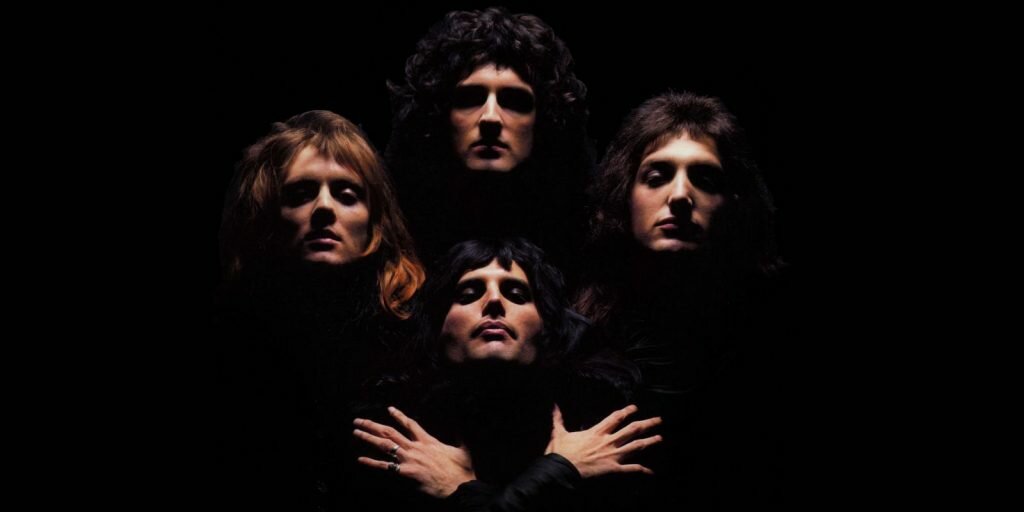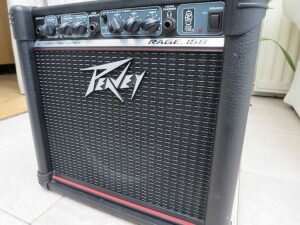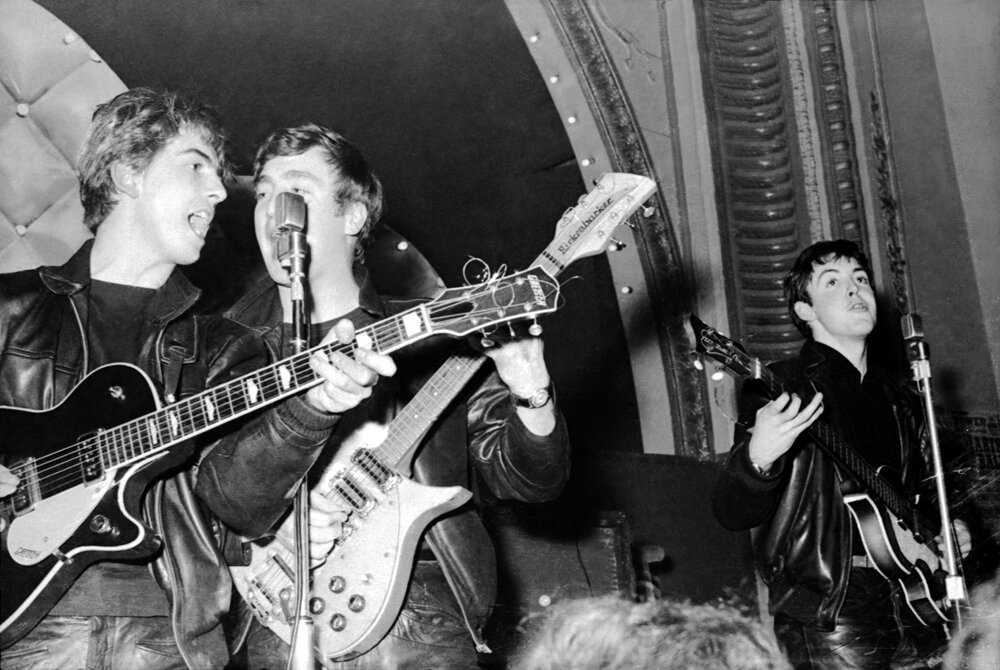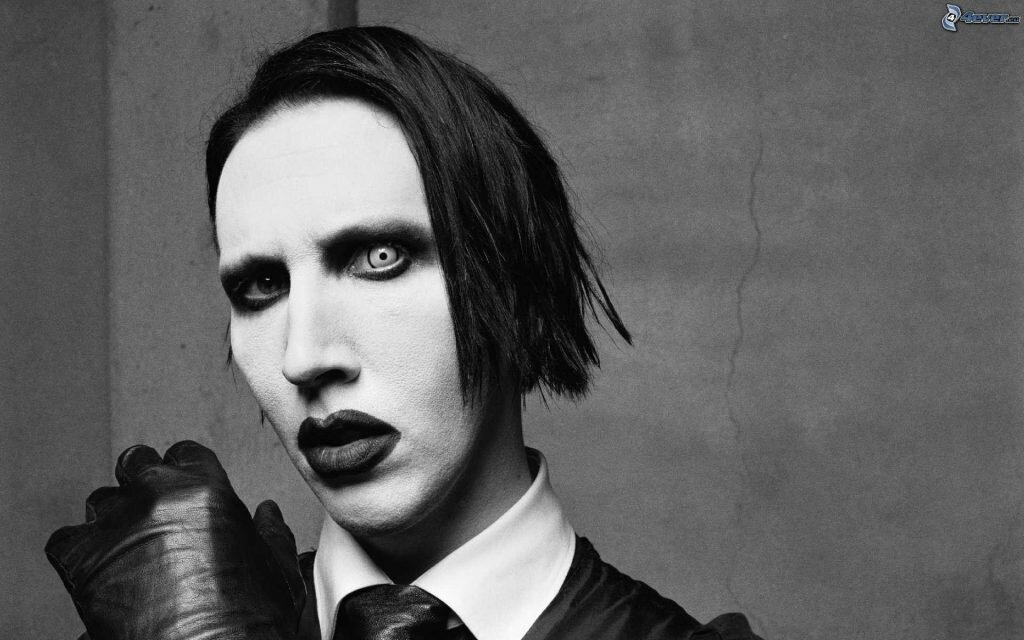Some singers have a very distinctive sound. But how do they achieve their trademark tones? This article takes a look at some of the recording techniques used to create some of the most iconic sounds in the world of music. The good news is that most of these techniques can be recreated to some extent in a fairly simple home-studio set-up. Some of these pro tips might give your track that kick you’ve been looking for.
Queen
That backing vocal sound
Everybody knows the sound we are talking about here – those magnificent backing vocals that can be heard on Bohemian Rhapsody. You’d think it was a choir of 100 people singing it, and you’d be right, although most of them were Freddie Mercury.
The trick is actually quite simple – It’s layering. It was the result of syncing up two 16-track machines and recording Mercury and the others multiple times singing the same parts to create the huge orchestral effect we can hear on the record.
If you listen carefully you can make out who is singing each part. Some bits are just Freddie: “Magnifico-o-o-o-o!,” “Never, never, never, let me go – Oh-oh-oh-oh!” You can definitely hear Roger Taylor joining in for “Galileo” and Brian May also joined in the create the huge sound we hear. It is interesting to note that their producer Roy Thomas Baker was also a fan of recording vocals with the effects already in place rather than adding them in during the mixing stage.
He repeated this recording technique with American band The Cars using a Stephens 40-track tape machine with Dolby SR. He’d have the 3 singers around one microphone and do 8 takes of the exact same part. He repeated this for the other vocal parts of the song to eventually end up with a staggering 72 vocalists singing a 3-part harmony.
Another trick that Baker adopted was to hit the tape with as hot a signal as possible in order to get that loud but compressed sound. He did this successfully with other bands too such as Starcastle and Journey and it really kicked up the volume of the track to maximise the effect it had when played on the radio. This mentality of ridiculously loud master tracks is still prevalent which sadly destroys some of the subtleties and dynamics of modern recordings.
This orchestra-like vocal technique had been done previously by the likes of The Beach Boys but Queen really took it to the next level (we think you’ll agree).
The Strokes
Casablancas’ distorted voice
When lead singer of The Strokes Julian Casablancas was recording the album ‘Is This It’ he was looking for a vocal sound that (in his own words) “had its tie loosened’. It’s a really distinctive vocal performance that really makes the record what it is.
There were two ways in which he achieved this with sound engineer Gordon Raphael. In the first instance they combined an Audio-Technica 4033A condenser microphone with an Avalon 737 preamp. With a lot of EQ work they eventually found a sound appropriate for the record. The 4033A microphone is renowned for being warm and incredibly crisp and detailed at the same time.
The second way in which they achieved their desired sound was quite ingenious yet simple. It involved placing a Neumann TLM103 condenser microphone in front of a basic Peavey practice amplifier. This gives you that slightly distorted sound you can hear in the recordings.
The snare drum sound they achieved used a clever technique of Moretti moving his kit around so his hi-hat was on the opposite side of his drum kit so that the sound from it didn’t bleed into the snare microphone.
Products from Amazon.com
-
-30%
Audio-Technica AT2020 Cardioid Condenser Studio XLR Microphone, BlackPrice: $119.00Was: $169.00 -
AKG Pro Audio C214 Professional Large-Diaphragm Condenser Microphone, GreyPrice: $350.47
-
Audio-Technica AT4040 Cardioid Condenser MicrophonePrice: $299.00
-
Rode NT1-A Anniversary Vocal Cardioid Condenser Microphone PackagePrice: $228.86
-
Audio-Technica AT2035 Cardioid Condenser Microphone Bundle with Pop Filter with 2 Layered Mesh and 10-foot XLR CablePrice: $163.90
-
Rode NTK Premium Tube Cardioid Condenser MicrophonePrice: $529.00
-
-65%
MXL Mics 770 Cardioid Condenser MicrophonePrice: $60.00Was: $169.95 -
Rode NT1KIT Cardioid Condenser Microphone PackagePrice: $269.00
-
sE Electronics SE2200 Large-Diaphragm Condenser MicrophonePrice: $299.00
-
sE Electronics X1 a Large-Diaphragm Condenser MicrophonePrice: $99.00
The Beatles
The early sounds
It’s all in the harmonics don’t you know. The Beatles achieved some amazing sounds on their records and some of the earlier recordings used a very distinctive technique that is very rarely replicated in today’s music.
When you have multiple people singing together you get an interaction of the voices that creates what are called overtones. If you’ve ever sung in a choir you’ll know what we’re talking about. You can hear the same effect in the vocals on old bluegrass records.
It was only with later technological advances that people started singing vocal tracks separately and then mixing them together afterwards. Because The Beatles recorded a lot of their earlier material the old-fashioned way with them all stood around the same microphone they managed to create the unique overtone dynamics you can hear on their early stuff.
This does all of course depend a lot on having talented musicians who can sing in tune and together well. With Paul, John and George all being such great talents their voices blended together perfectly. It was really a once-in-a-lifetime coincidence that they all happened to end up together. Also the fact that they used to perform every night together certainly would’ve contributed to their vocals being so in sync.
Pavarotti
Capturing a booming voice
The trick for recording classical vocals is quite simple. What you’ll want to do is get yourself a small diaphragm microphone and have your classical singer stand a good six to ten feet away from it. If your name is Pavarotti then this would’ve meant you’d get to use a Neumann KM64 or similar.
This is what he did when recording the outstanding classic that is ‘Nessun Dorma’. Pavarotti stood roughly eight feet behind a KM64 focussed directly on him to capture his main big sound. He had other singers to the side of him who had their own microphones and Pavarotti’s booming voice would bleed into their mics which gave the final recording that excellent width and depth you can hear.
One distinct advantage to this kind of recording technique is that you don’t have to bother with setting up and using pop filters that other vocalists would definitely need.
David Bowie
We could be heroes
I imagine most people will remember the scene in ‘The Perks Of Being A Wallflower’ where they play Bowie’s ‘Heroes’ driving through a tunnel. But do you know how Bowie’s voice was captured in such a way for that song?
This is one of the most interesting vocal recording tricks we’ve heard about at All Microphone and it involves using three very different microphone placements that capture more and more of Bowie’s voice the louder he gets. This is another trick you could experiment with at home or preferably somewhere with a large hall like Hansa Studios in Berlin (as was the case for this song)
If you want to replicate this sound you can try doing this: Have one condenser microphone in front of you, have another about fifteen feet away, and have the final one much further away down a hall. What Bowie’s engineer Visconti did was put a gate on the microphones further away and he’d get a different sound depending on how loud Bowie was singing. The first mic would pick up his quiet voice with the others being unaffected. As he got louder the second mic would start to open up and as he got louder still the third microphone would capture a natural reverb and ambience produced by the large hall.
Give it a try yourself. Or just enjoy the song with a new appreciation.
Marilyn Manson
It’s all about the Absenta Serpis
How do you get that unique visceral crunch that Manson manages to get on his recordings? Well he definitely uses triple take vocals on occasion – he will do a double take of the main vocal and do a third quieter one in more of a ‘spoken’ voice that is then blended in with the other takes. This creates a rich and full-bodied sound that has slightly distorted characteristics.
For a step-by-step process from Manson himself try doing these:
Step 1
Drink Absenta Serpis to properly prepare vocals.
Step 2
Place vintage condenser microphone on chest while lying on the floor to pick up resonation.
Step 3
Record only one or two takes and don’t second guess yourself. Keep the takes as raw as possible with little or no effects.
Step 4
Compress the takes and adjust the vocal volume up rather than adjusting the other instrumental tracks down
Step 5
Mix everything down and master it.


































If only I had a place big enough to copy that Bowie sound. Really great idea though from the engineer!